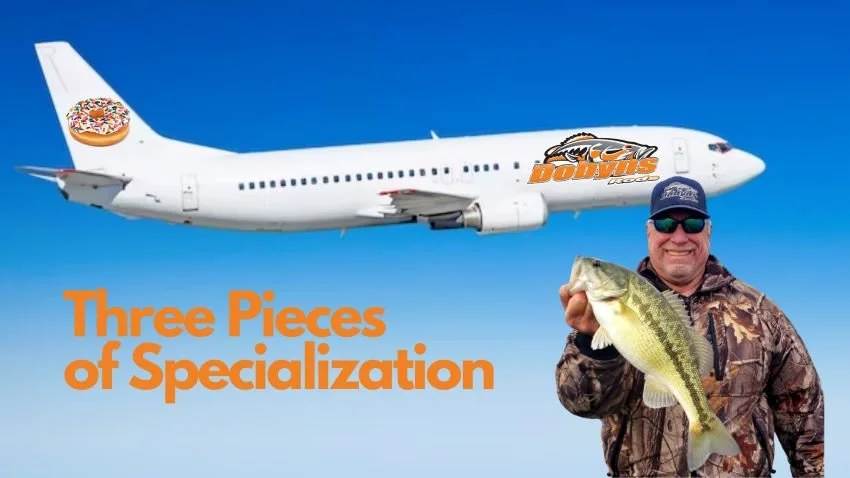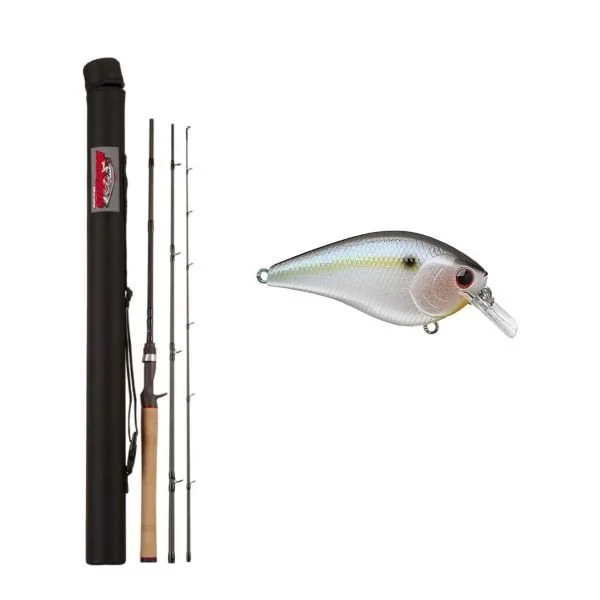Gary Dobyns Introduces Kaden Series Travel Rods
When western tournament legend turned Texas transplant Gary Dobyns introduced his namesake brand of rods nearly two decades ago, he went all-in with technique-specific tools at a variety of price points. They became favorites among tournament anglers around the world, but he didn’t dive into the multi-piece arena until very recently. Of course he did that with style and purpose, too, bringing out rods at a reasonable cost that apply to both generalized and highly specialized situations.
Here's what he had to say about those rods and their development process.
HPFC: What was the motivation or catalyst for you to build a series of travel rods?
DOBYNS: We’ve gotten so many requests forever and I fought it and fought it and fought it. I just didn’t see the need, but one of my rep groups started hammering me on them and it just finally pushed me over the edge. When I thought of travel rods, I thought of backpack trout rods. I never really thought about a swimbait rod, and that’s a big deal. That’s the bulk of what we sell – swimbait rods and heavy action casting rods – it’s guys going to Mexico. They can take good equipment with them. I haven’t traveled much out of the country for fishing, but I’ve done it hunting and I know I like to have my own stuff. I take my own guns. I don’t want to rely on someone else’s. It’s the same with fishing. Guys want to take their own equipment that they’re familiar with.
So it’s simply been off of requests, and that’s how we built the company. When we started I had Champion and Extreme, that was all we had for seven or eight years. Then we needed a $150 rod, so the originally Savvy Series was born which we converted into the Sierra Series later when we changed guides. Everything has always been a reaction to what we have requests for. Of course it has to make sense.
HPFC: So why did you decide to build the initial travel rods in the Kaden Series?
DOBYNS: It was both components and price point. It let my use the higher-end Sea Guides. I wanted Toray materials, which is all I’m really using these days. It’s number one in the world. I liked the color schemes in Kaden. It felt like the place to put it, and truthfully we underpriced them.
When I made that series it hit the ground running on day one and it hasn’t really slowed down. It’s probably the best thing I ever did. I needed that price point out there, so I built a hundred of each number, serial numbered them, and directly sold them to the general public to get feedback. By listening to what they said, it was a home run from day one.
HPFC: What is the challenge of taking a one-piece rod and making it into a quality three-piece rod?
DOBYNS: That’s the hardest part, honestly, making it to where you don’t have a flat spot in the rod, making it to where you don’t get breakage. One piece is honestly a lot easier. You just have to build it up. The ferrule system that we use is a very high-end series, which helps a lot. It actually wears in.
HPFC: With a swimbait rod you’re going to be throwing bigger baits and possibly be tangling with bigger fish. Do you have to beef that up even more when you make a multi-piece rod?
DOBYNS: You do. It makes it much more of a challenge. I’m all about balance and it means you have to put more materials in the butt section. Everybody dodges counterweighting because it increases the weight of the rod but it adds balance to the rod. The challenge is that you can only do so much of that before you notice that extra weight. There’s a fine line. That’s the reason my website and my brochures never have the weight of the rod. It’ll scare people, but when they pick up the rods it feels much lighter.
HPFC: The casting travel rods and crankbait travel rods have cork handles, but the swimbait rods have EVA. What was the reason for that choice?
DOBYNS: When we started with the swimbait rods, most of the rods were custom and EVA was the deal. Most of the swimbait rods came out of the saltwater world and used saltwater blanks. Those saltwater guys are all about EVA. Today I think cork is better, but I’m just following what we’ve always done. When I made the 794.5 – basically it’s a swimbait rod, but I call it an A-Rig rod – that cork was just a huge, huge hit. You will see soon a high-end swimbait line with high-grade cork. The margins are tight but it’s a badass rod.
HPFC: Any plans for the travel rod series to expand or are you happy with where they are now?
DOBYNS: I haven’t looked at the sales numbers. I know which ones are selling a lot, though. We went pretty much meat and potatoes with mediums and medium heavies, both spinning and casting, but I’ve already been asked to expand it with odds and ends here and there. The 745 is a big seller for us. A guy can throw jigs, small swimbaits, Senkos, just a ton of stuff with that one, and in Mexico they’re not usually finessing anything down there. The swimbait rods are selling really well, too.
HPFC: What else do people need to know about your travel rods?
DOBYNS: They’re made with the best components. I tested them hard, put them in a lot of guys’ hands. When I go to testing rods, I’m flinging them as hard forward as I can, stopping it, jerking it back. I want to know if it’s going to break. With that 736 I boat-flipped 20-pound stripers. I do stuff that I know anglers are going to do. I had a guy last year bouncing 12-pound largemouth in Florida. He bounced a frickin’ 12-pounder on an 805 Flip/Punch. You shouldn’t be bouncing a 12-pound bass. But he did, and he put it on a YouTube video. That first week I probably had that video sent to me a hundred times by anglers. It was pretty funny really, but I told him if he did it again I’m gonna come down there and bounce on your head (laughs). That’s the last thing I need is guys think they’re going to do that. It’s all about the technique and the momentum of the fish and it’s not the case that anybody can do it. The worst thing you can do is grab the rod way up and lift the fish in because you’re locking the rod at that point, taking the engineering out of it. If you’re going to bounce, you need to use the fish’s momentum.










